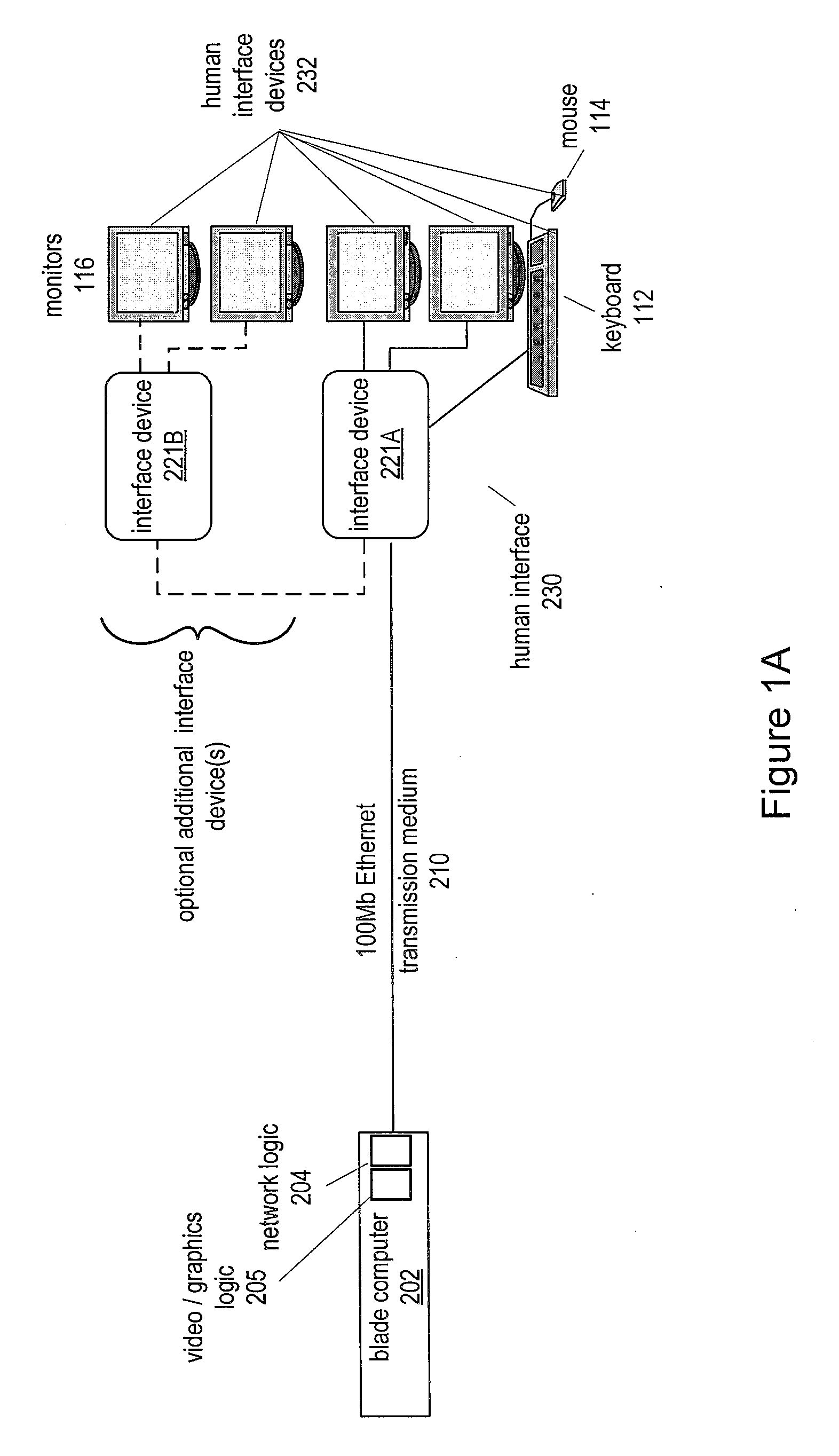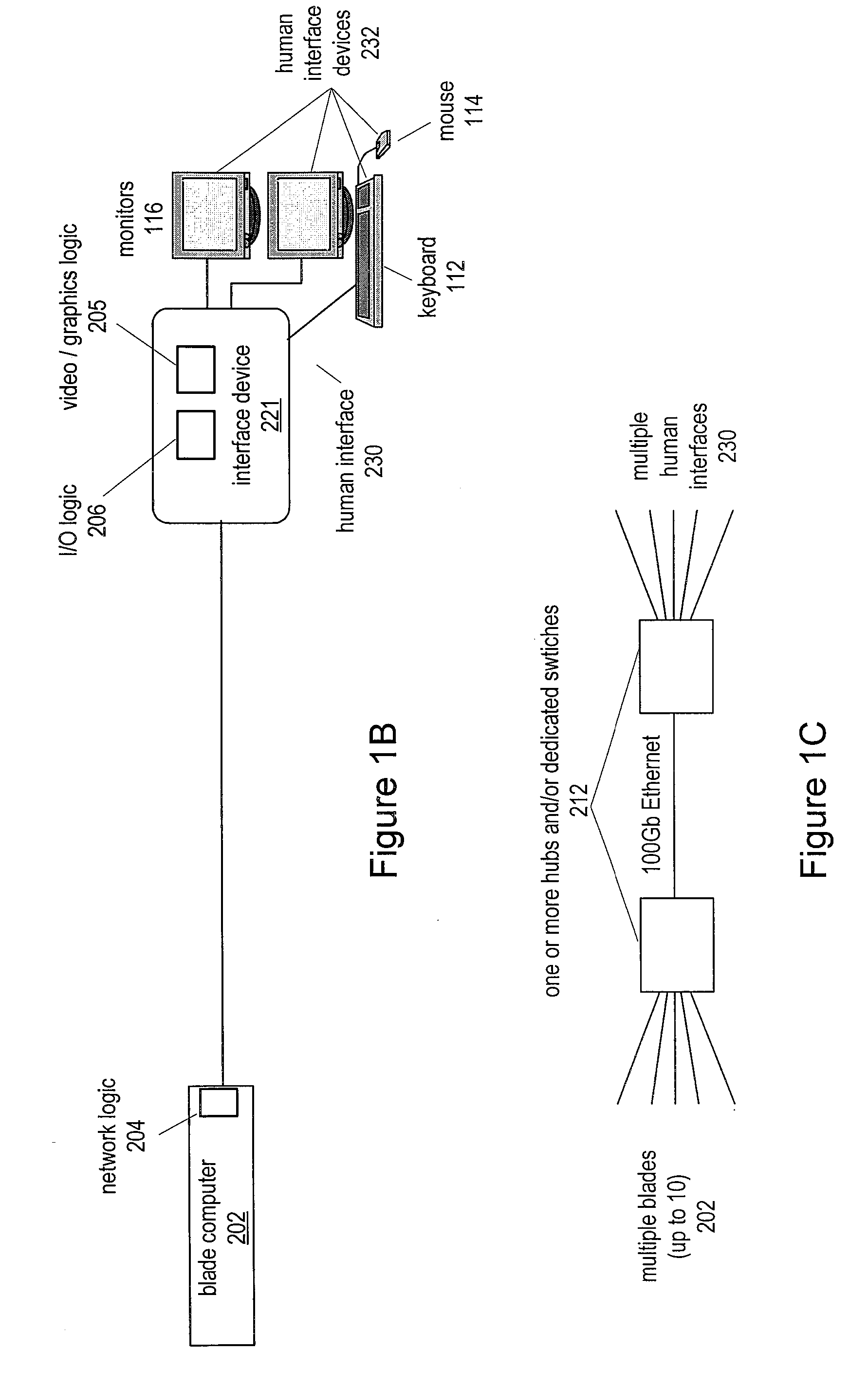Utility Computing System Having Co-located Computer Systems for Provision of Computing Resources
a technology of computing resources and computer systems, applied in the field of providing computer resources, can solve problems such as computer games, computer games and achieve the effects of exposing a company to copyright infringement claims, inappropriate or dangerous software to a computer, and storing bootlegged softwar
- Summary
- Abstract
- Description
- Claims
- Application Information
AI Technical Summary
Benefits of technology
Problems solved by technology
Method used
Image
Examples
Embodiment Construction
Incorporation by Reference
[0050] The following patents and publications are hereby incorporated by reference in their entirety as though fully and completely set forth herein.
[0051] U.S. Pat. No. 6,119,146 titled “Computer Network Having Multiple Remotely Located Human Interfaces Sharing A Common Computing System”, which was filed May 4, 1998, whose inventors are Barry Thornton, Andrew Heller, Daniel Barrett, and Charles Ely.
[0052] U.S. Pat. No. 6,038,616 titled “Computer System With Remotely Located Interface Where Signals Are Encoded At The Computer System, Transferred Through A 4-Wire Cable, And Decoded At The Interface”, which was filed May 4, 1998, whose inventors are Barry Thornton, Andrew Heller, Daniel Barrett, and Charles Ely.
[0053] U.S. Pat. No. 6,012,101 titled “Computer Network Having Commonly Located Computing Systems”, which was filed May 4, 1998, whose inventors are Andrew Heller, Barry Thornton, Daniel Barrett, and Charles Ely.
[0054] U.S. patent application Ser...
PUM
 Login to View More
Login to View More Abstract
Description
Claims
Application Information
 Login to View More
Login to View More - R&D
- Intellectual Property
- Life Sciences
- Materials
- Tech Scout
- Unparalleled Data Quality
- Higher Quality Content
- 60% Fewer Hallucinations
Browse by: Latest US Patents, China's latest patents, Technical Efficacy Thesaurus, Application Domain, Technology Topic, Popular Technical Reports.
© 2025 PatSnap. All rights reserved.Legal|Privacy policy|Modern Slavery Act Transparency Statement|Sitemap|About US| Contact US: help@patsnap.com



